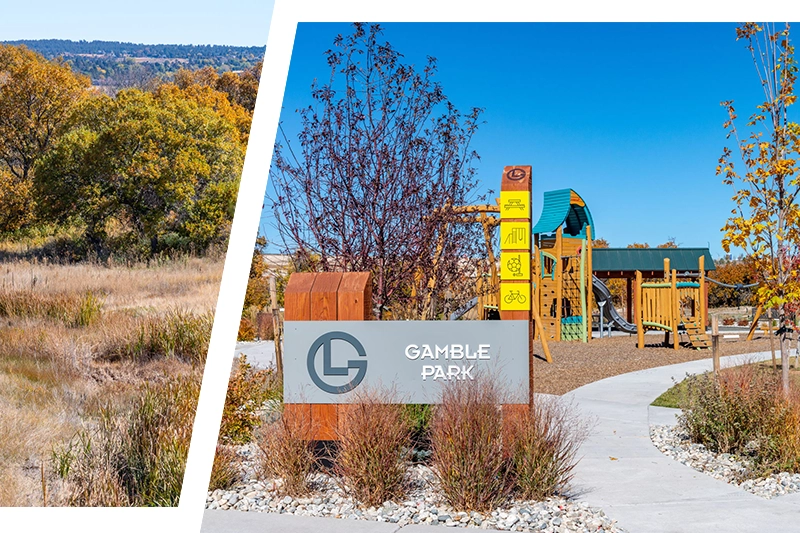
June 27, 2024
Looking Glass Community: A Reflection of Frontier Heritage and Natural Beauty
Historically, the term “looking glass” referred to a mirror or reflective surface—not just one that provides a clear reflection of the self, but also one that can distort reality in enchanting ways.
In the context of a prairie, “looking glass” describes a visual phenomenon where the undulating waves of tall grasses create a shimmering effect, akin to the appearance of water. This mirage effect occurs when sunlight hits the grasses at certain angles, causing them to ripple and sway in a way that tricks the eye into seeing a glassy, watery expanse.
In the sprawling prairies, where the horizon seems endless and the land meets the sky in a seamless line, this illusion can be quite striking. It was especially so for the 19th-century settlers who arrived to this remarkable landscape. The grasslands, with their constant movement and glistening sheen, create a scene that early travelers often likened to the surface of a “looking glass” or mirror.
Through its name, the Looking Glass community in Parker not only celebrates this natural spectacle, but also the wonder and awe experienced by frontier pioneers. This deep love and respect of the land is their legacy—a concept we carry proudly at Looking Glass.
Discovering the Looking Glass Prairies
For the early settlers and explorers of frontier America, the mirage effect of the prairie grasses was both symbolic of the beauty and promise of new land, and also a metaphor for the challenges they faced. The shimmering horizon mimicked water, a crucial and sometimes hard-to-find component of survival in these dry lands.
The term “looking glass” also carries connotations of reflection and introspection, qualities that were undoubtedly present in the minds of those who ventured into the unknown territories of the West. As they journeyed through the vast prairies, the pioneers would have had ample time to ponder their lives, their decisions, and the future they were striving to build. The ever-changing surface of the prairie grasses became a fitting metaphor for their own transformative experiences.
Moreover, there is the literary component that many of us are familiar with from Lewis Carroll’s 1871 novel, Through the Looking Glass, more commonly known as Alice in Wonderland. Carroll’s epic established the looking glass as a symbol for a portal to another world, or a lens for seeing things from a different perspective. For the people pushing the boundaries of the known world, the prairies were just that—a threshold to new opportunities, new beginnings, and a new way of life.

The Looking Glass Community: Bridging Past and Present
Through its name and design, the community of Looking Glass pays homage to the natural beauty of Parker, Colorado and the frontier heritage of the American West.
Today, residents of the Looking Glass community can enjoy the serene and picturesque landscapes that continue to echo the undulating grasses of the prairie. The community’s design incorporates natural elements and open spaces, reflecting the same sense of vastness and connection to nature that the early settlers would have experienced. Looking Glass is not just a place to live; it is a place to reflect on the past, appreciate the present, and look forward to the future.
Looking Glass is a name that encapsulates the essence of the prairie mirage effect, combining the area’s natural splendor with its historical roots. It serves as a living reflection of the journey from frontier challenges to modern comfort, inviting residents to experience the ongoing story of the American West and create their own legendary next chapter at Looking Glass.